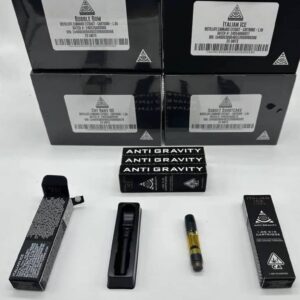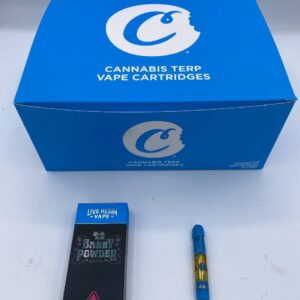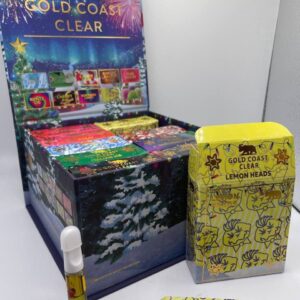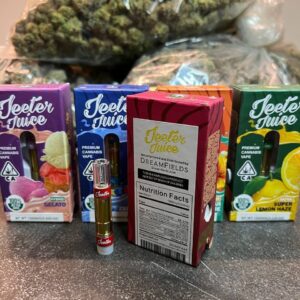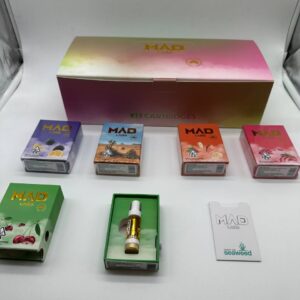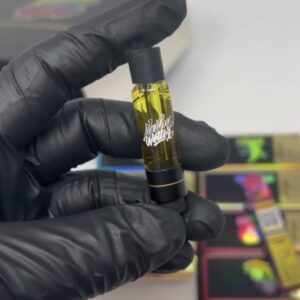In the evolving world of cannabis consumption, THC cartridges have distinguished themselves as a discreet, efficient, and potent method for enjoying the myriad benefits of tetrahydrocannabinol (THC). As the primary psychoactive component of cannabis, THC delivers both recreational euphoria and therapeutic relief, making its delivery method an essential consideration for users. This comprehensive exploration will dissect the intricacies of THC cartridges, covering their construction, types, advantages, how they’re used, potential risks, and the legal landscape shaping their availability and usage.
Composition and Design A typical THC cartridge consists of a small reservoir or chamber containing concentrated cannabis oil, rich in THC. This oil undergoes extraction and refinement processes to achieve desired potency and purity, often enhanced with natural terpenes for flavor and aroma. The cartridge attaches to a vaporizer pen through a standard '510-thread' screw connection in most cases, with the vape pen serving as both the power source and the heating element. Types of THC Oil Distillate Cartridges: They contain highly refined cannabis oil, usually with a potency that can exceed 90% THC. This process removes most other compounds, offering a pure THC experience. Full-Spectrum Cartridges: These aim to preserve the full spectrum of compounds found in the cannabis plant, including cannabinoids, terpenes, and flavonoids, to harness the entourage effect—a theory suggesting compounds in cannabis can work more effectively together than in isolation. CO2 Extracted Cartridges: Using supercritical carbon dioxide as a solvent, this extraction method is celebrated for its ability to capture a wide range of compounds without the need for further refinement or the use of harsh chemicals. The Advantages of THC Cartridges Discreet Usage: Their vapor produces a less pungent aroma than smoke, dissipating quickly and allowing for more discreet use. Convenience: Pre-filled cartridges coupled with the portable nature of vape pens offer unparalleled convenience, especially for users on the go. Controlled Dosage: Each inhalation offers a relatively consistent dose of THC, aiding users in managing consumption effectively. Variety and Flavor: The vast selection of cartridges available allows users to explore a wide range of strains and flavors. Efficiency and Potency: The concentration of THC in cartridges means a small amount goes a long way, providing a potent experience even with small puffs. Usage Guide Using a THC cartridge involves attaching it to a compatible vape pen, turning on the battery (if it's not draw-activated), and inhaling from the mouthpiece. The pen heats the oil to produce vapor, which is then inhaled. For beginners, it's advisable to start with small puffs and gradually increase as needed to achieve the desired effect. Considerations and Risks While THC cartridges offer a modern and appealing method of consumption, they are not without risks. Health Concerns: The vaping crisis of 2019 highlighted potential health risks associated with certain additives in vape oils, such as Vitamin E acetate. It's crucial to purchase cartridges from reputable sources to avoid harmful contaminants. Potency: The high potency of some cartridges can be overwhelming, particularly for new users, leading to adverse effects such as anxiety or paranoia. Battery Safety: Faulty vape pen batteries pose a risk of overheating or exploding if not used and charged correctly. Navigating the Legal Landscape The legality of THC cartridges mirrors that of cannabis itself, varying widely by jurisdiction. In regions where cannabis is legal for medical or recreational use, cartridges are typically available at licensed dispensaries. Conversely, in areas where cannabis remains illegal, possession of THC cartridges can lead to legal penalties. Users are encouraged to familiarize themselves with local laws and regulations to ensure compliance. The Future of THC Cartridges The future of THC cartridges looks promising, with ongoing innovations focused on improving safety, potency, and user experience. Advances in extraction technologies and the development of organic, non-toxic additives promise to enhance the purity and quality of these products. Additionally, the evolving legal landscape may broaden their availability and acceptance, further cementing their place in the cannabis consumption repertoire. Conclusion THC cartridges have revolutionized the way users engage with cannabis, offering a blend of convenience, potency, and discretion that traditional methods struggle to match. However, their effectiveness and safety largely depend on the quality of the product and responsible usage. As the cannabis industry continues to mature, THC cartridges stand as a testament to the innovation driving the market forward, promising an even brighter horizon for enthusiasts and patients alike.

